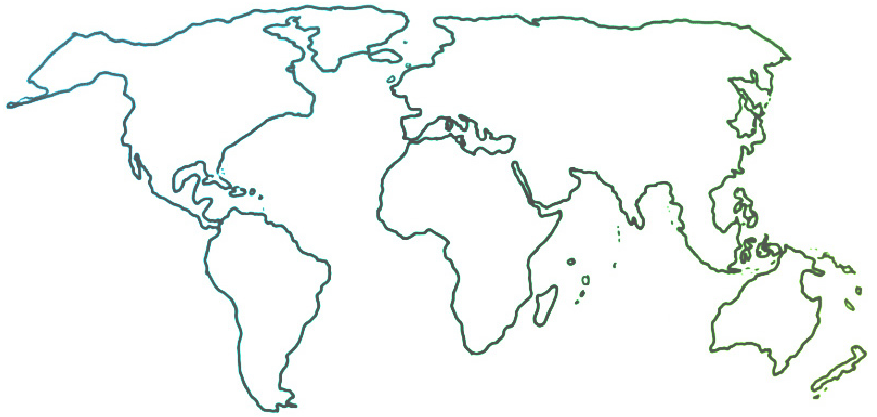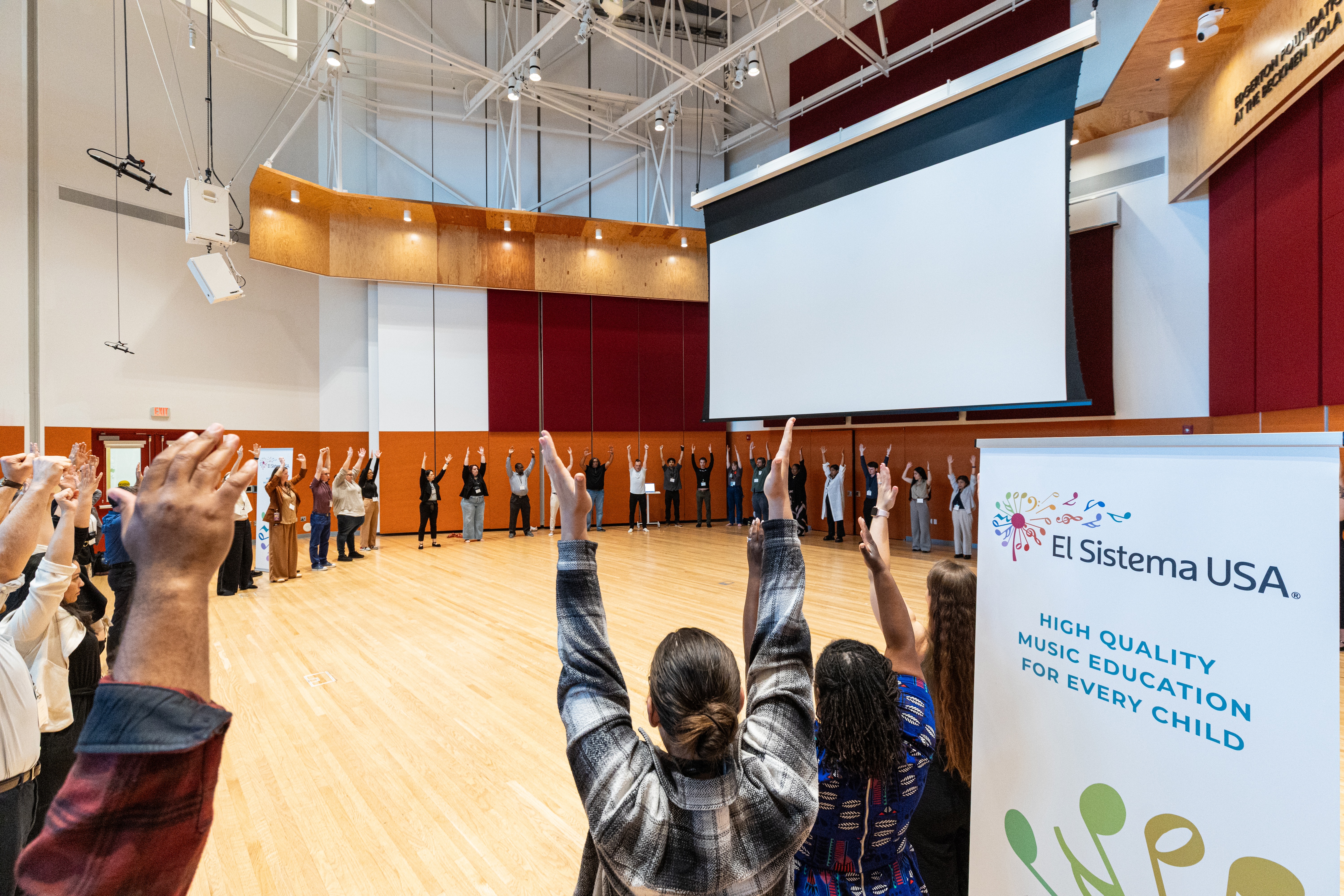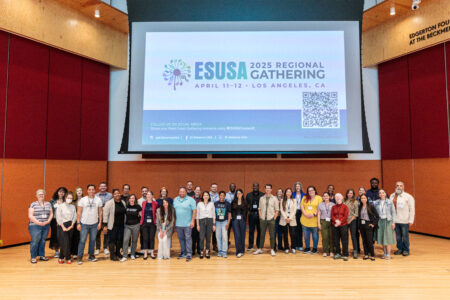
Noticias y recursos
New Guiding Pillars Amplify Our Collective Voice
Elizabeth Moulthrop, Executive Director, El Sistema USA

Scene from the ESUSA 2025 West Coast Regional Gathering, bringing many music programs together. Photo: Paul Cressey.
Nearly two decades ago, a handful of United States programs that were inspired by El Sistema in Venezuela opened their doors. Since then, El Sistema USA® has become a network of more than 150 organizations—the largest such network in the world. Our members represent a diverse array of music programs from dozens of states, as well as international programs in adjacent countries from Canada to Haiti. Given the diversity and breadth of our network, it’s reasonable to ask: What is the common thread between these programs? And why does this collective work matter? Watching and helping this coalition grow and evolve, we have been able to isolate a few distinct qualities that unite us and affirm the power of our collective voice.
Certainly, we all share a foundational inspiration: El Sistema Venezuela, which celebrates its 50th anniversary this year. A nationwide system from the very beginning, it grew organically out of its unique circumstances, needs, and strengths, shepherded by the visionary José Antonio Abreu. In contrast, the El Sistema-inspired programs popping up in and around the United States were small, independent programs developed as uniquely their own, shaped by their culture, communities, policies, and arts ecosystems. El Sistema USA was formed first as an alliance of like-minded programs, and later, in 2014, as a formalized membership network. The movement now serves over 30,000 students.
Programs in the ESUSA network are small pieces of a vast—but uneven—music education ecosystem. While El Sistema Venezuela operates as one entity, El Sistema-inspired programs in the U.S. usually operate as nonprofit community partners, working in the extended learning-time space (after school, weekends, summers) to create opportunities for students who face financial, geographic, or cultural barriers to accessible music education.

The most recent El Sistema USA Census demonstrates the nature of our interconnected ecosystem. The 2024 ESUSA Census shows that 59% of responding organizations report that they hire in-school, full-time music teachers. This is a great example of collaboration across the arts ecosystem. Almost half of the census respondents say that some students have access to music education in some of the schools they work in, but not in others, reflecting the uneven distribution of in-school arts access. In some cases, the El Sistema program is strengthening and supplementing in-school music; in others, the El Sistema program is filling a gap.
With the benefit of data and feedback from member programs, we decided to formally revise our guiding “pillars” (goals). Regardless of where they are or how they operate, all of our members strive toward the same criteria: High-Quality Music Education, Equity & Access, and Holistic Impact. These pillars have been designed to honor the founding vision of El Sistema while capturing the wisdom our network has built over almost two decades in the U.S. This adaptation isn’t dilution—it’s evolution. It’s helped us identify the myriad ways in which our organizations thrive.
Take, for example, Sistema Ravinia, just north of Chicago, which serves students after school but also partners with the Chicago Musical Pathways Initiative to provide deeper musical training opportunities for advanced students who want to pursue music. Or New Jersey’s Paterson Music Project, which runs an after-school ensemble music program but also partners with the John J. Cali Pathways Program at Montclair State University to offer students private lessons and provide high-quality instruments. Another example is Indiana’s ECoSistema, which has a strong in-school program at a public elementary school that has adapted the El Sistema philosophy into its classrooms. ECoSistema also runs an after-school program embedded in a Boys and Girls Club.
On the national level, ESUSA is working to increase access to college-level music institutions for our students. One such example is the ESUSA Fellowship at the Peabody Institute, which provides a full cost of attendance scholarship to up to two ESUSA students annually.
These examples are very different organizations, operating at different stages of development and support, and yet all of them strive toward their goals by demonstrating a communal, collaborative sensibility. This is a powerful model for students who seek to build community through their music. Our students don’t need us to do everything—they just need us to connect the dots.
Back to our original question: Why does collective work matter? Why is connecting the dots between local opportunities across large distances so important? Because it’s the way we can strengthen our impact—and also the way we can find a large-scale collective voice.
In the U.S., we are navigating a shifting political landscape that impacts many areas of American life, including nonprofits, education, and the arts. We know that we are stronger when we stand together. When we stand alone, it’s easier to lose sight of our values under pressure.
This is the value of plugging into a larger network, whether the context is local, national, or international. It’s our hope that programs everywhere can lean into our collective voice and continue to evolve thoughtfully and strategically, to best support students and their families everywhere.
Contenido relacionado
América del Norte, Diseño de programas, Enseñanza y aprendizaje, el conjunto
Apoyo a la iniciativa de jóvenes artistas
longy-admin

Europa, Eventos/Espectáculos, Gather Together, el conjunto mundial
Estudiantes de Bosnia y Herzegovina, Croacia y Serbia actúan juntos
longy-admin


